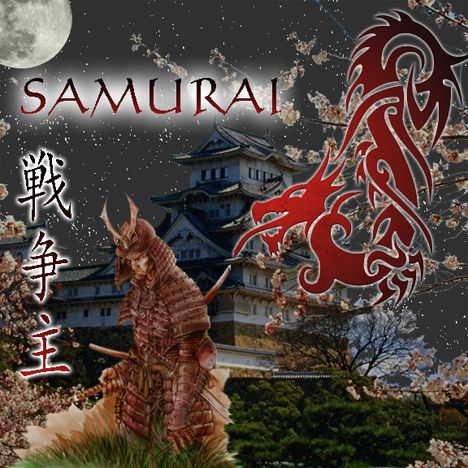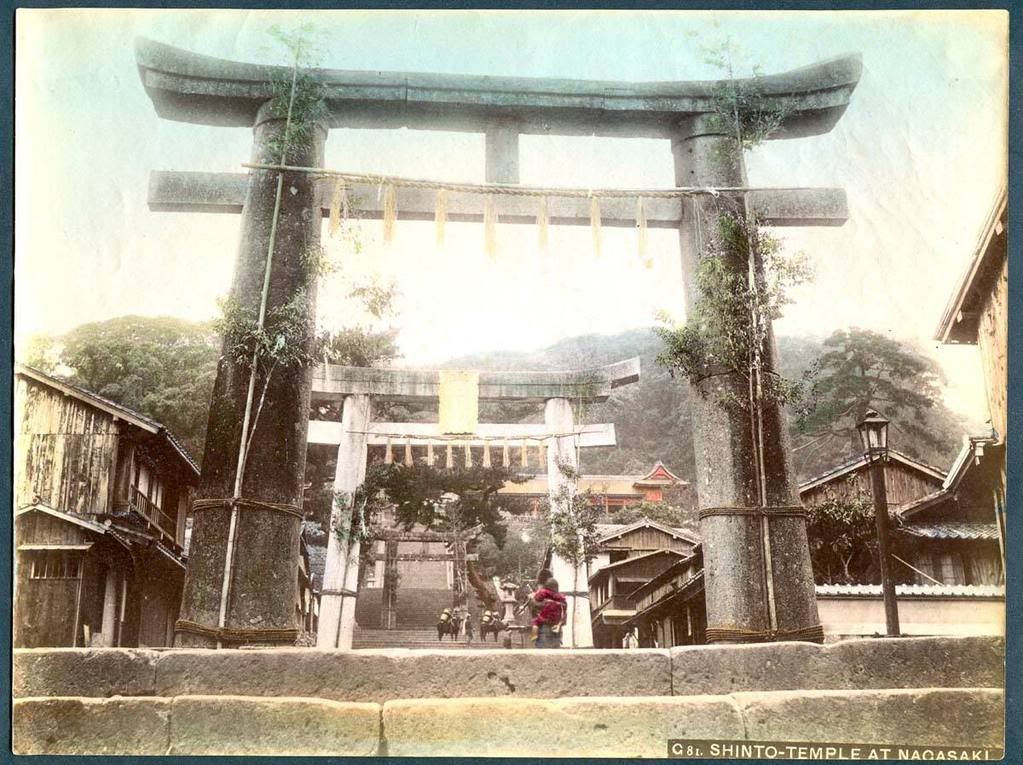
'The Last Samurai' (Wikipedia)
The Last Samurai is a 2003 American epic war film directed and co-produced by Edward Zwick, who also co-wrote the screenplay with John Logan. The film stars Tom Cruise, who also co-produced, as well as Ken Watanabe, Shin Koyamada, Tony Goldwyn, Hiroyuki Sanada, Timothy Spall and Billy Connolly. Inspired by a project by Vincent Ward, it interested Zwick, with Ward later serving as executive producer. The film production went ahead with Zwick and was shot in Ward’s native New Zealand.
Cruise portrays an American officer, whose personal and emotional conflicts bring him into contact with samurai warriors in the wake of the Meiji Restoration in 19th Century Japan. The film's plot was inspired by the 1877 Satsuma Rebellion led by Saigō Takamori, and on the westernization of Japan by colonial powers, though this is largely attributed to the United States in the film for American audiences. It is also based on the stories of Jules Brunet, a French army captain who fought alongside Enomoto Takeaki in the earlier Boshin War and Frederick Townsend Ward, an American mercenary who helped Westernize the Chinese army by forming the Ever Victorious Army.
The Last Samurai was well received upon its release, with a worldwide box office total of $456 million.[1] It was nominated for several awards, including four Academy Awards, three Golden Globe Awards and two National Board of Review Awards.
**************************************************
 'The Last Samurai' was based on a true account, in which the protagonist was a French officer, and you can find a documentary of that on YouTube. However, this movie was realistic and its sentiments genuine. The first scene was in 1876 San Francisco I recall, and U.S. Captain Nathan Algren (Cruise) was engaging in a promotional tour for Winchester Company... "how Winchester rifles were winning the west." He gave his speech drunk, and was clearly a man who was broken by his participation in certain misdeeds during the Indian Wars under the infamous Lt. Col. Custer. Apparently one of the worst offenders of some of the slaughtering of women and children was Col. Bagley, whom is Algren's sworn enemy from the beginning. The gist of the story is Bagley approaching Algren to recruit him to into an American industrial effort to provide Japan with the training and weapons to subdue the Samurai tribes.... as they had done with the Amerindian tribes of the west. The Samurai were very unhappy about the sudden rapid transformation of Japan. Algren and Bagley meet with Japanese businessman Omura, and Algren agrees to participate after he is offered a lot of money for the mercenary effort. Omura and Bagley make quite a duo of antagonists, with Omura being even more unsavory than Bagley... which says a lot.
'The Last Samurai' was based on a true account, in which the protagonist was a French officer, and you can find a documentary of that on YouTube. However, this movie was realistic and its sentiments genuine. The first scene was in 1876 San Francisco I recall, and U.S. Captain Nathan Algren (Cruise) was engaging in a promotional tour for Winchester Company... "how Winchester rifles were winning the west." He gave his speech drunk, and was clearly a man who was broken by his participation in certain misdeeds during the Indian Wars under the infamous Lt. Col. Custer. Apparently one of the worst offenders of some of the slaughtering of women and children was Col. Bagley, whom is Algren's sworn enemy from the beginning. The gist of the story is Bagley approaching Algren to recruit him to into an American industrial effort to provide Japan with the training and weapons to subdue the Samurai tribes.... as they had done with the Amerindian tribes of the west. The Samurai were very unhappy about the sudden rapid transformation of Japan. Algren and Bagley meet with Japanese businessman Omura, and Algren agrees to participate after he is offered a lot of money for the mercenary effort. Omura and Bagley make quite a duo of antagonists, with Omura being even more unsavory than Bagley... which says a lot.This movie contains quite a number of very interesting quotes about Japan, Japanese mythology, and Samurai tradition; but gathering them here is more effort than I want to give for this review. A major theme in the movie is the Shintoist culture... which is essentially the Samurai culture... much the same as Odinist culture was tied to Teutonic tribal tradition. Another theme of this movie was "Ancient vs. Modern." Actually I don't always buy this perception, and these conflicts usually stem from something ancient, sacred, and wise... which happens to be in the way of contrived social, political, and economic change, and this is not always "progress" by dictionary definition. The word "Samurai" is plural, as like "Samurinians." It basically means "warrior" and "to serve"... and probably other meanings. As Algren is crossing the Atlantic Ocean... there seems to be a symbolic/spiritual period amid the lonely waters. During this period of apparent "transformation," Algren says in narrative-style: "There is some comfort in the emptiness of the sea. No past. No future." This seemed to be his personal journey from a broken state, towards redemption.
Upon meeting the twenty-four year old Emperor Meiji, the Emperor saw clear parallels between their situation and the American situation with the Amerindians. However, he was torn between his love for this "teacher" Lord Katsumoto who was the leader of the Samurai, and this effort towards so-called "modernism." After the Army conscripts were rushed into service, against Algren's warning that they were not ready, they finally meet up with the Samurai. As they come face-to-face with the Samurai, who emerge from the midst on horseback, it was like an army of legend returning to the world. As if they were Spartans, Romans, Vikings, or Langobards coming back from the dead against a modern army. The horns of the Samurai helmets reminded me of Viking or Gaulish helmets... as if they were the horns of Cernunnos. The fierce expressions and bearded faces of the Samurai also reminded me of Odinic warriors. After the Japanese army is slaughtered, Algren shows tremendous heart in fighting to the end.. and Katsumoto witnesses this and decides to take him prisoner instead of the apparently usual method of putting their adversaries to death. As Algren fights off Samurai warriors with a pole-flag with a tiger emblem, an impressed Katsumoto sees the spirit of the tiger in his actions.
Katsumoto begins a series of dialogs with Algren in a Shintoist Temple, which he says his family constructed a thousand years prior. The temple reminded me of an Odinic hof in that it was less gaudy, and more spiritually "of the Earth." One theme of Samurai culture was that a Samurai warrior "cannot stand the shame of defeat," at which time they either take their own life or someone else takes "the honor" of taking his life. That concept is in total contrast with Vehmic tradition of "dogged resilience," or many other traditions that allow for "redemption." The Samurai tradition was more focused on "fate," "honor," and dying "a good death," customarily in battle. "Honor" seems a word that can be interpreted many ways. After being told the numerical odds that Custer faced at "the Battle of Little Big Horn," Katsumoto was impressed... "I like this Custer"... at which time Algren strongly disagreed, but did eventually understand the concept. Eventually they did share the vision of glory as they verbally and allegorically carried out "the Battle of Thermopylae." Another theme of Shintoist/Samurai culture was "perfection." Everything should be done with the intention of perfection.. or at least the process of achieving perfection, which was often in relation to various forms of warfare... usually the distinctive Samurai sword (using wooden sticks in mocked-training). The tribe was in constant training for war, similar to the ancient Langobards. A whole culture based on a military tradtion, maybe more similar to the Spartan ethic.
At one point earlier, Bagley said to Algren: "What is it about your own people that you hate so much?" I didn't think that that projection fit Algren, and his eventual love for the Samurai culture seemed hard-earned and genuine. Eventually, after a long process, they accepted him as a man of honor... a "quasi-Samurai" I guess. Later in the film, Katsumoto--feeling that he had betrayed his people since this had all happened on "his watch"--said to Algren: "The way of the Samurai is not necessary anymore." Algren responed: "Necessary? What could be more necessary?" I was just thinking the other day, what makes a great movie? I think one with many great scenes, and this movie had them. One aspect of the film which caught my eye was the Samurai architecture. The basic houses seemed advanced, with an almost old European-like square structure, made of wood, hardwood flooring, with what we may see as a Japanese style to them. I skipped a lot of the interaction as Algren interacted with this community, but his journey to acceptance was not easy. I guess maybe part of the theme could be that "good things aren't easy." The ending is very dramatic. I would highly recommend this film. After watching this film, it seems to me that an old question... what is honor?... is begging for a new answer.
.


No comments:
Post a Comment